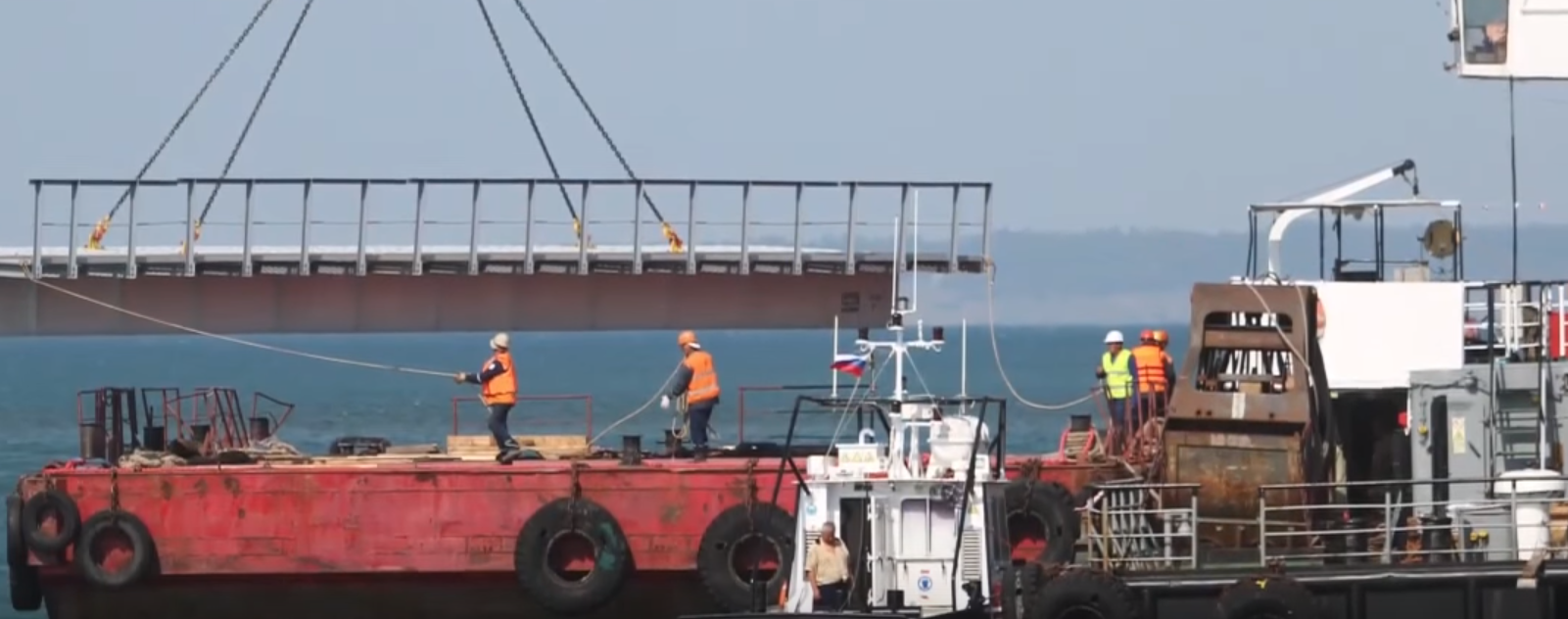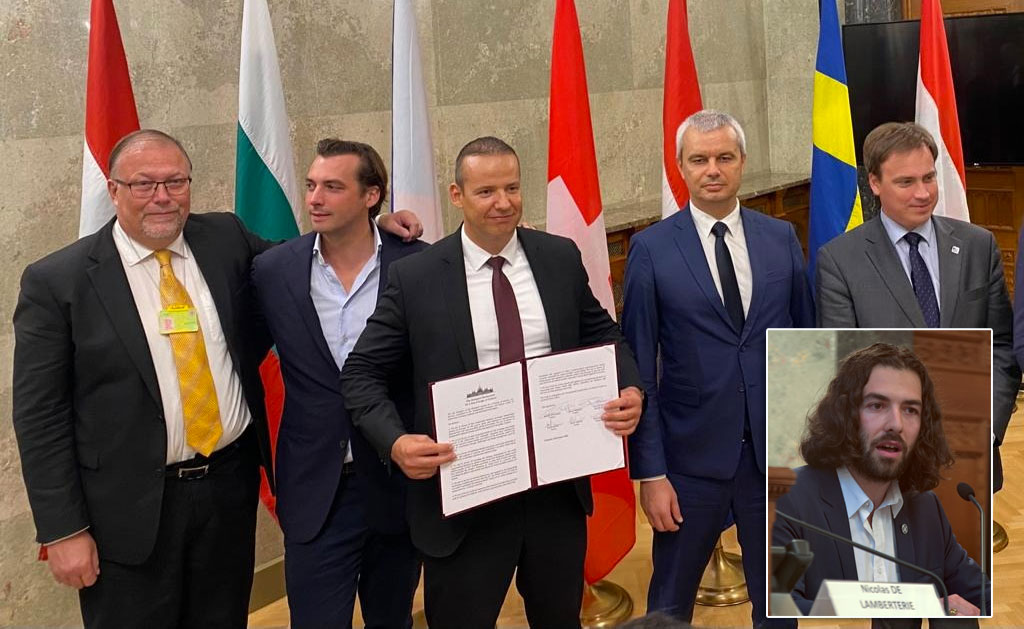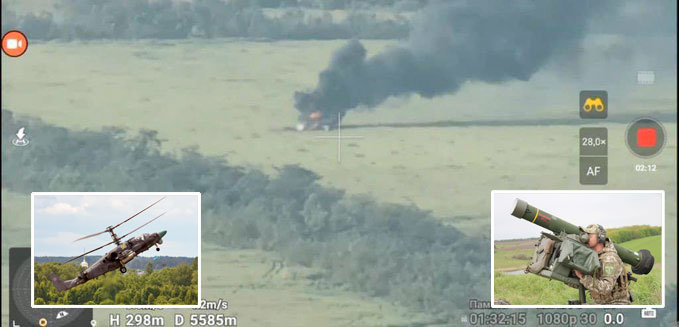“Ukraine should now destroy elements of the bridge,” Tom Rogan wrote in The Washington Examiner, since it would guarantee Russian retaliation,
“While that course of action would be an escalation against Putin and one that would almost certainly spark Russian retaliation, this bridge is an outrageous affront to Ukraine’s very credibility as a nation.”
Rogan said the bridge was also a “psychological appropriation of Ukrainian territory” and not only a “physical” appropriation.
“Fortunately Ukraine has the means to launch air strikes against the bridge in a manner that would render it at least temporarily unusable. Because of its significant length, the Ukrainian air force could strike the bridge while mitigating the risk of casualties by those traversing it,” Rogan explained.
“Severing the bridge, even if temporarily, would send an unmistakable signal from Kiev to Moscow that Ukrainians are unwilling to accept the comfortable formalization of Putin’s territorial theft,” Rogan concluded: “Bombing the bridge would thus be a very personal rebuke to Putin’s ambitions.”
The Washington-based Atlantic Council has already called for freedom-of-navigation operations by the United States Navy in the Azov Sea.
Last month a Turkish ship attempted to destroy the Russian bridge to Crimea. On March 19, a cargo ship LIRA, rammed the support of a constructed bridge over the Kerch Strait at top speed.
As we now know, the construction of the bridge was not affected. A source from the Crimean Bridge information center explained to the TASS news agency on March 23: “The cargo ship leaned on the support of the temporary working bridge, which is being built between the island of Tuzla and fairway (navigating channel).”
As a result of the incident none of the crew members on board were injured, but one of the bridge’s pillars was completely destroyed, another one next to it was almost destroyed and several others were badly damaged.
According to the report two gauge piles were destroyed as well as a further two supports were damaged by the collision. The damaged bridge was used for technical cargo delivery for the construction of the main bridge over the Kerch Strait.
The ship is owned by Voda Shipping, registered in Panama and its captain is a Turkish citizen. Currently, the vessel is held at Taganrog port. Russian media assumed that the accident wasn’t just a technical incident, but an act of intentional sabotage, committed by Turkey.
MarineTraffic.com website shows the last position of the ship as off the coast of Taganrog.
To prevent sabotage by attempts to ram supports, special hydraulic structures, called pawls have been created. They will be built of metal dowels with a stone backfill and a reinforced concrete head.
There have been no Russian plans to update high sea capabilities and the 2018–2027 armament program is instead exploring the possibility of building “Super Gorshkov” frigates (Project 22350M) and heavy missile corvettes (Project 20386).
Considering that Russia’s core interests lie in the Sea of Azov, there is no need to build a costly new blue-water navy, the Russian Federation believes. Moscow could not afford such a fleet and Russian shipyards would not be up to the task, says Igor Delanoë, Deputy-Head of the French-Russian Analytical Centre.
“In the Black Sea, Russia will aim to retain a comparative advantage against potentially hostile navies by accounting for the terms of the Montreux Convention, fortifying Crimea and building its fleet around Kalibr,” he said.
Delanoë holds a PhD in History and his primary areas of research interest concern Russian defense and foreign policy issues, Russia interests in the Mediterranean and in the Middle East, as well as the geopolitics of the Black Sea region.
The status of the Azov Sea, according to international law, is still vague, particularly because the 1936 Montreux Convention does not cover it. Thus, the main guarantors of security of this sea are Ukraine and Russia, although the pivotal principle of freedom of navigation there and via the Kerch Strait remains in place.
Currently both states have the power to control the passage of third countries’ naval forces into the Azov Sea. Thus the progressive “littoralization” and the “kalibrization” of the Black Sea Fleet reflects, at a smaller scale, the relative constraints of the Russian navy.
Russia has already established anti-access and area denial (A2/AD) zones in: Kaliningrad, Murmansk, Polarnyi, St. Petersburg, Moscow, Sevastopol, Novorossiysk, Novosibirsk, Vladivostok, Nakhodka, Petropavlovsk-Kamchatsky, Novaya Zemlya, Tiksi, Khmeimim airbase in Latakia (Syria).
For this purpose, a special marine brigade of Federal Nation Guard Troops Service was created. The bridge is also included in the cover zone of the S-400 complex deployed in the Crimea, and in connection with the limitation of the radio horizon.














One comment
“Now you know I’m going to be lambasted and called anti-Semitic… They’ll say he was up to his old canards; he said Jews control Hollywood. Well, they said it themselves! Jews control the media. They said it themselves!”―Louis Farrakhan
By submitting a comment you grant Free West Media a perpetual license to reproduce your words and name/web site in attribution. Inappropriate and irrelevant comments will be removed at an admin’s discretion. Your email is used for verification purposes only, it will never be shared.